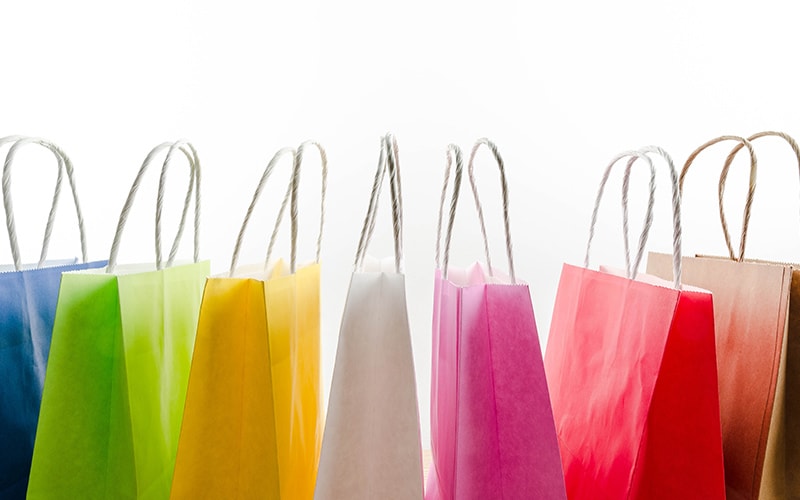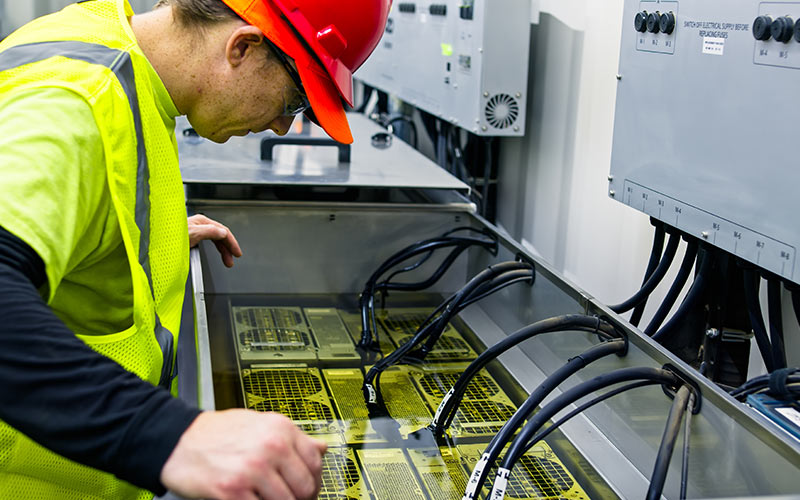Digital retail wins against physical stores in many ways. From the customer’s point of view, it’s convenient because it’s accessible any time and place — as long as there is internet access. The inventory is limitless, as customers can access the inventories of competitors across the web, rather than just the products in one physical location. And of course, the customer can search for the best prices from the comfort of their phone, rather than traveling across town. Products don’t even need to be carried from store to home.
There are also many benefits for the retailer. Digital marketing and referrals can be more targeted and cost-effective in attracting customers to their site. Once there, customers can be identified through their login details and tracked through cookies. This, in turn, helps the retailer offer more customized prices, as well as recommending related products for upselling and cross-selling.
Digital enables retailers to rapidly “A/B test” different designs, offers and products simultaneously.
This speeds up the feedback loop from customers and can further improve the effectiveness of the site to grow sales.
Until now these benefits have seemed out of reach for physical retailers. However, innovative technology is now coming to market that enables physical stores to replicate many of the benefits of the digital retail channel for both customers and retailers.
While many of these are still in the experimental stage, many are being adopted and going live with established retailers — and some are even being adopted and backed by the world’s biggest digital giants.
Harmonizing physical and digital along the customer journey
We use the concept of harmonized retail blocks (Figure 1) to categorize different stages of the customer journey.1 It’s a helpful structure for us to step through some of the most innovative ways physical retailers are bringing the best of digital into their stores.
Figure 1. Harmonized retail blocks along the customer’s journey

1. Attract: make physical proximity more attractive than digital convenience
The “Attract” block is about incentivizing customers to use the physical store. But most of the time a customer doesn’t know what’s in stock unless they physically check in store. Most customers search online and get directed to the online store — and all the online competition. Enter NearSt, a retail tech startup, which partnered with Google to show customers online what is available in local stores. It connects with any retailer’s point of sale system, mines the inventory data and serves this up to Google so that it appears in online searches.
So for example, a customer doing research for products online will be shown when that product is in stock nearby — increasing the chance that they will visit the physical store to purchase it. NearSt is in its early days, but it found strong traction within bookstores, the market that they have decided to target first. “Our estimate shows that for these bookstores which sign up, they get 50-100 extra customers coming in each month, and obviously it varies how much they will spend,” says Brackenbury, NearSt co-founder. “There is a lot of news about Amazon but when you see how through Google that how people can find things nearby, I think there is a bright future for shops.”
2. Engage: activate Wi-Fi to engage on a personal level
The “Engage” block is about delivering personalized experiences to identified customers. Digital retail has been able to identify customers through online social accounts. The problem lies with customer identification in physical stores. Physical stores need to efficiently sync up with such customer identification data. One way to do this is through a store’s Wi-Fi system that connects with customer devices.
It’s estimated that 75% of shoppers have a Wi-Fi-enabled device in their pockets and this will rise to 90% by 2022.2
Free Wi-Fi in a store motivates customers to sign into a retailer’s app. Retailers can use this opportunity to target users with discount coupons and recommendations, especially targeting the customers who stay in a store for more than 10 minutes. However, 92% of customers spend under five minutes at convenience stores in the U.S.3 Remembering customers after their first visit with a “remember me” feature for automatic authentication is a positive step to engagement. Nonetheless, digital authentication alone is not enough and must be complemented by sales associates to provide customized services. After all, they are in a good position to track customer statistics on past purchases and can influence cross-selling.
The Prada Group implemented guest Wi-Fi through a cloud-based Wi-Fi suite in more than 600 retail stores across the globe. Customers can access customized welcome portals by logging in through their social media accounts. Every customer device is mapped to a unique digital identity and Prada gets a comprehensive view of customers at their stores. This enables the brand to confidently make decisions on merchandise and staff allocations that will ultimately help engage with their customers better.4
3. Explore and select: help customers find the best products for them
Digital commerce has made it convenient for customers to browse for products along with recommendations that suit them. Two challenges that retailers face in a store is training store associates on the full inventory available, and then giving them the skills to recommend associated products to customers in real-time.
In fact, about 83% of shoppers think they are more knowledgeable than store associates.5
Mercaux is a mobile platform built for retailers to deliver unique shopping experiences with up-to-the-minute style suggestions and real-time access to inventory levels both in-store and online. L.K.Bennett, a British luxury fashion brand, uses Mercaux to empower sales associates with trending outfit suggestions that helps them build their own outfits to express themselves creatively to customers. Furthermore, customer feedback and insights can be leveraged in this process.6 United Colors of Benetton used the Mercaux app with tablets and iPods to help their sales associates with real-time stock information, visual merchandising and operational guidelines from the headquarters. This uplifted sales by 8-14% just one month after launching this app.7
Another example is the Mars Agency’s SmartAisle as its in-store voice assistant. It partnered with specialty beverage retailer BevMo! to help customers decide which whiskey to buy. This is how it works: an illuminated unit in the whiskey aisle, which features nearly 50 whiskey bottles, has an Amazon Echo that instructs users how to launch the experience. As customers talk into SmartAisle, the Echo responds and guides customers through their decision-making process. At the end of the process, customers are left with one whiskey bottle on the illuminated shelf.
4. Checkout: make it invisible
Queuing at a checkout to buy goods is probably where physical and digital retail experiences are the furthest apart. But even here the gap is closing.
Amazon Go is setting a new standard in autonomous checkouts since it was introduced in Seattle in late 2016. Amazon unveiled this cashier-free grocery store format in an 1800-square-foot retail space but by October 2017, the store hadn’t opened due to issues with technology tracking more than 20 people. This store was finally publicly opened on January 22, 2018, and successfully let shoppers grab the items they wanted and leave the store. It worked through computer vision and sensors that helped identify a customer’s cart items and automatically charged their accounts when they walked out the door. Amazon is considering opening 3,000 cashierless stores by 2021.8
A number of competitive solutions have emerged since Amazon Go. Infosys’s London-based design studio, Brilliant Basics, has also developed a system in partnership with a sports-fashion brand using CCTV cameras to track the movement of items on a store shelf. The system recognizes when a customer puts an item into their basket. It also tracks whether an item is returned and removes it from the virtual shopping basket. The systems are designed to charge customers for items virtually once they leave the store. It can also help notify staff of spillages.
5. Deliver: go beyond digital delivery
Consumers’ expectations for delivery have been defined by online retail providers’ ability to provide next-day, or even same-day deliveries direct to the home. As we’ve described in our previous paper,9 it’s becoming more common for physical retailers to provide the same service, either by integrating better with their own online channel, or partnering with online leaders.
But what if physical stores could use their local inventory to take delivery to the next level?
CommonSense Robotics, an Israeli startup, offers an automated solution for retailers that are looking to meet customer expectations on demand. As retailers compete with one another on same-day delivery, CommonSense Robotics offers a solution to deliver online orders within an hour. How does it go about this task? Hundreds of robots are present in micro-fulfillment centers in dense urban areas to make the speed of such local delivery possible. Retailers can take this space on a pay-as-you-go service that offers flexibility in renting depending on dynamic customer orders from various locations. Fulfilling orders within 1-2 miles of where a customer stays can help resolve the last-mile delivery challenge that most retailers face.
Major Israeli retailer Super-Pharm is able to serve hundreds of customers daily through CommonSense Robotics’ operating site.10 Imagine when such a micro-fulfillment center is in every neighborhood of a retailer’s customers. Hours would definitely be cut down into minutes.
6. Closing the feedback loop
However, improving each step of the customer journey through innovative technologies is not the full picture. One of the main advantages that digital has over physical is the ability to rapidly test new designs and propositions to consumers. In some cases, testing hundreds of different website layouts a day.
Coordinating such tests across a network of physical stores is challenging, and expensive, requiring head office designers to work with each store team to set up new store layouts and then track their performance. Yet a new innovative company has come to the rescue here as well.
Yoobic is a retailer mobile app that digitizes operational processes and helps head office designers collaborate with store associates on-the-go. It enables new designs or store layout suggestions to be sent to store associates, who can then also send photos and data back on the effectiveness. The system also encourages fun and engaging gamified challenges for associates to compete and outperform other stores in a network. Tracking team performance and incentivizing top performers inspires confidence among store associates.
Tools such as this can close the loop on physical and digital channel management. A physical retailer with the ability to identify customers, personalize offers, sell and delivery quickly, as well as track and modify their store layout, will have all the tools that have made digital retail such a success. Those retailers who can master using these across both channels will be able to accelerate their growth ahead of their competitors.
References
- “Resurrecting the Physical Store Through Harmonized Retail,” Infosys Knowledge Institute, June 2019
- “The Global Mobile Consumer Survey 2018,” Deloitte, 2018
- “Distribution of shopping time at convenience stores in the United States in 2018,” Statista, 2018
- “Prada delivers a personalized in-store customer experience through WiFi,” Cloud4Wi, June 14, 2017
- “Survey: 83% of shoppers think they know more than store associates,” Retail Dive, March 16, 2017
- “L.K.Bennett: Delivering a unique and personalised shopping experience,” Mercaux
- “Benetton: Double digit uplift in Store sales,” Mercaux
- “Amazon Will Consider Opening Up to 3,000 Cashierless Stores by 2021,” Bloomberg, September 20, 2018
- “3 Ways Physical Retail Can Capture a Slice of $4 Trillion,” Infosys Knowledge Institute, June 2019
- “Making One-Hour Online Grocery Deliveries: Interview With Ran Peled Of CommonSense Robotics,” Forbes, Feb. 25, 2019





